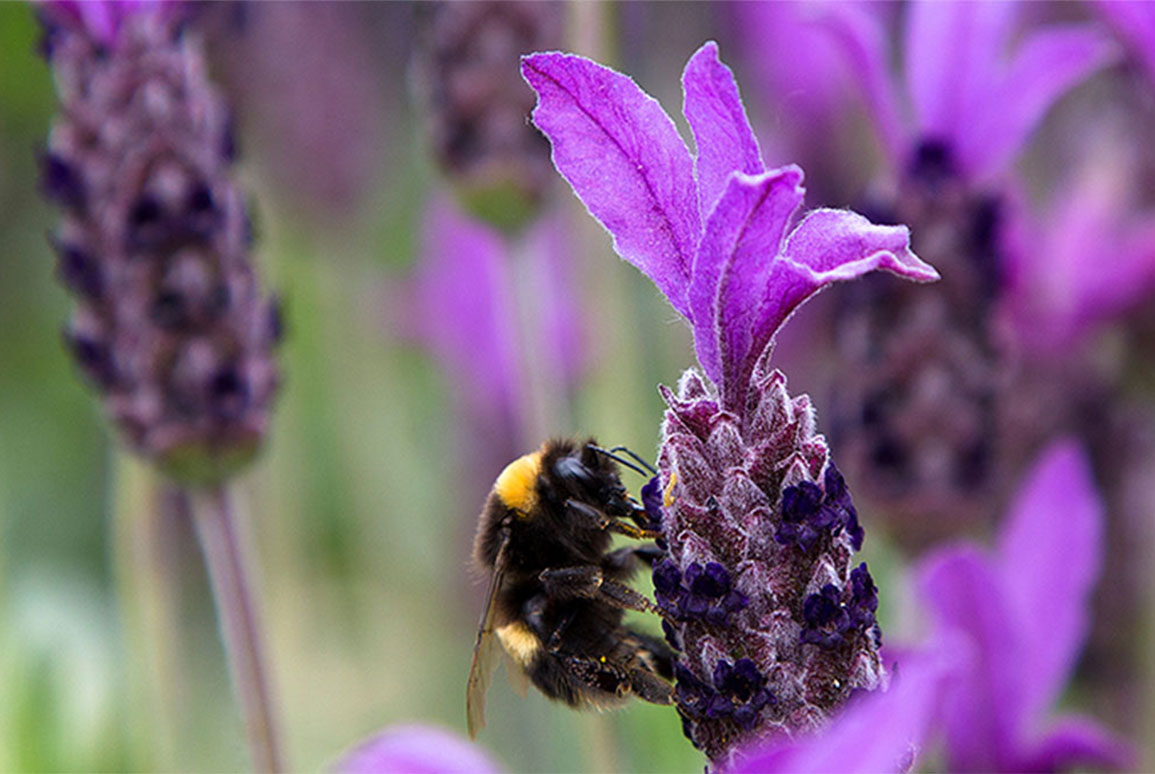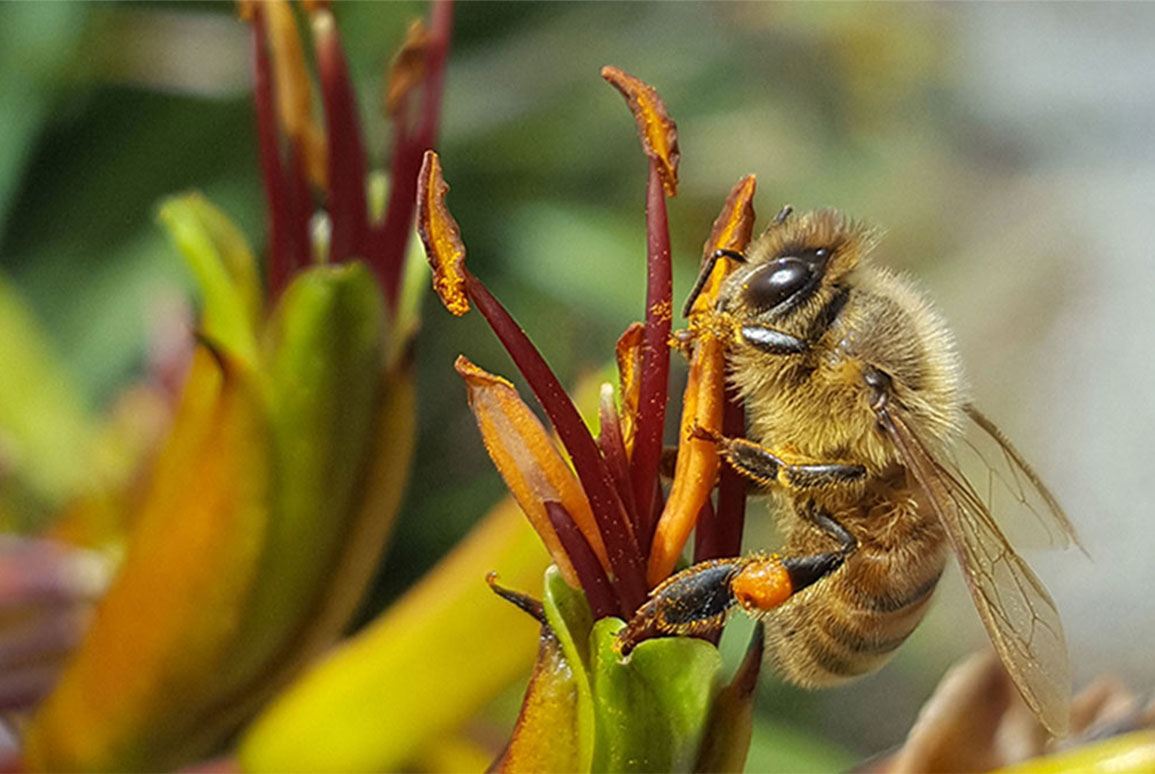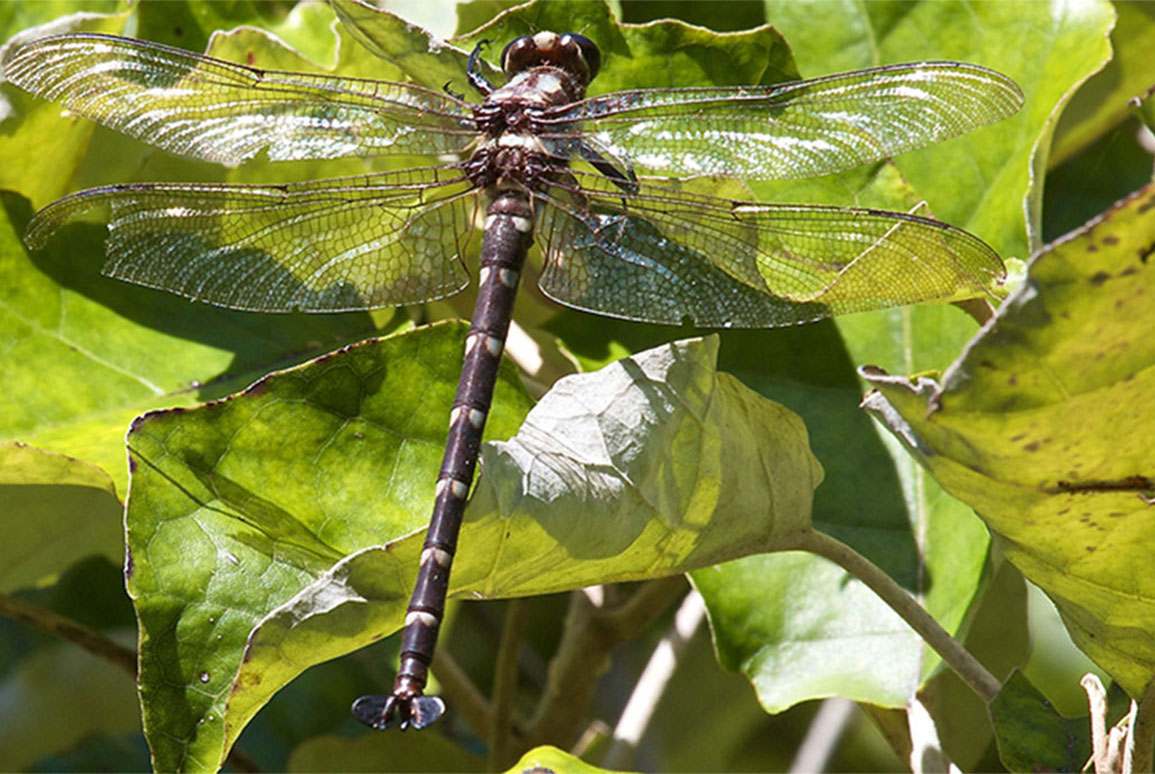Opinion: Are we experiencing an Insect Apocalypse ?
28 January 2020
Insects are the under-appreciated powerhouses of our ecosystem. In reviewing evidence of a global decline in population, Dr Tanya Blakely suggests that we need to embrace the discomfort of our complex relationship with these essential creatures.

I’ve long had a fascination with insects, yet my interest in these wee critters is often a juxtaposition of fascination and fear. Like many, I’m allergic to bees but know they are essential pollinators; I find hornets and wasps scary yet am fascinated by their intelligence.
I get the ‘warm-fuzzies’ when I see bees and hoverflies busy in my garden. And I love to watch praying mantises and ladybirds lend a helping hand with my pest control. Maybe not surprisingly then, my university research focused on insects and my work life is centred around freshwater insects and other invertebrates.
Insects play a central role in provision of services for ecosystems and humans. They’re essential pollinators of crops, detritivores and nutrient cyclers — consuming and recycling dead plant and animal matter; and providers of food for myriad other animal groups — birds, fish, lizards, aardvarks, even humans. They control insect pests, such as aphids and caterpillars; and honey bees have been providing us with honey and beeswax since Egyptian times. Some insects are crucial in medicine — historically, fly larvae or maggots have been used to treat gangrene and today cockroaches are helping scientists resolve antibiotic resistance (exploiting the ‘roaches love affair with filth and their natural resistance to many infections).
Insects make up the majority of terrestrial species on Earth. There are some 900,000 species of insects known to science, including over 350,000 beetle and 150,000 fly species — and new species are being found every day.
With numbers like that, you might think we’ve got more insects that we need. But that’s not the case.

There has been concern for some time about insect declines around the world. Numbers of bees, hoverflies and other pollinators have been declining on a global scale, primarily due to pesticide use. Monarch butterfly populations have dropped. Twenty years ago, monarch butterfly migrations to Mexico were at one billion individuals; the latest count is down to less than 60 million. Then there’s the continuing threat to honey bees by the invasive and aptly named Varroa destructor (Varroa mite) and the global crisis known as the colony collapse disorder.
What’s more, people are beginning to speak of finding fewer insects squished on their windscreens after a long drive. This anecdotal evidence has been coined ‘the windscreen phenomenon’ and while this might, in part, be due to improved aerodynamics (so air — and the insects flying through it — travels over the car rather than into the windscreen) there is growing empirical evidence of declines in many groups of insects. I can certainly remember travelling long distances through rural New Zealand and having more insects than I could count smash into our windscreen as we travelled along.
The windscreen phenomenon has been tested in Britain and Denmark. In 2004, the Royal Society for the Protection of Birds asked British motorists to attach a “splat-o-meter” to their number plates and record the number of squished insects during their road trips. Although there weren’t any historical data to compare the findings to, many participants remarked on how few insects the splat-o-meters captured.
Danish researcher Anders Møller studied the number of insects killed on windscreens between 1997 and 2017. He corroborated the results from this rather unusual sampling method with more traditional insect sampling methods. He found an 80-97% reduction in the number of insects in the 22-year long splat-o-meter experiment. Of even greater concern, he found the number of insect splats was strongly correlated with a decline in insect-eating birds.
In a recent scientific article in Biological Conservation, Sánchez-Bayo and Wyckhuys reviewed 73 research studies from across the globe and assessed the underlying drivers of insect decline. Their analysis of the scientific literature gives a jaw-dropping synopsis.
We’ve already lost a considerable proportion of our more pollution-sensitive aquatic insect groups: mayflies, stoneflies and caddisflies. Other insect groups at risk of extinction are moths and butterflies; bees, wasps and ants; and dung beetles. Specialist insects — those species that have a narrow range of environmental conditions, specific diets, discrete habitat requirements — are more at risk than generalists. These dramatic rates of decline may lead to the extinction of 40% of the world’s insect species in the next few decades.
Scientists have listed the main drivers of insect species decline: anthropogenic (human-induced) factors, including habitat loss and fragmentation through conversion to intensive agriculture and urbanisation; pollution including pesticides and fertilisers; pathogens and invasive species; and climate change.
It worries me immensely to hear the world’s pre-eminent insect researchers (or entofauna ecologists) speak of an insect apocalypse, which could lead to an ecological Armageddon — a catastrophic collapse of nature’s ecosystems. Some might say this is just a scare tactic, but others see this clarion call and the mounting evidence to show the decline of insects may be more widespread than initially thought — even greater than declines observed in plants or birds.

We should be worried.
Of course, scientific data is not always enough for some to see the link between themselves and the problem. Sometimes re-framing the problem is necessary.
US entomologists John Losey and Mace Vaughan have done the sums on the financial value insects contribute to the USA. They found that insects, as food for fish and wildlife, provide about $50 billion to the recreation industry; $4.5 billion in pest control, $3 billion cleaning up grazing lands. Not to mention the almost incalculable economic gains through crop pollination.
In my view, there is plenty enough evidence to show that imminent action is required.
It’s clear that insects are an integral part of nature’s ecosystems and human life — putting food on our tables, cleaning up our waste. So, what can we do?
I suggest we be willing to change some ‘behaviours’ and accept some small ‘inconveniences’.
Should we change our ways of producing food to help halt the decline? Research shows organic farms have more insects than conventional farms. Organic farms use less pesticides and herbicides, and organic farms may have more variety of habitats than intensive agricultural settings.
True, organic produce isn’t always picture-perfect, and sometimes it’s more expensive. The law of supply and demand would suggest that the price of organic produce (and free-range meat and eggs) will go down, as more of us purchase it. And is totally unblemished fruit and veg really that critical to our quality of life?

Urbanisation is another key driver of habitat loss. The ‘urban jungle’ is dominated by concrete, glass and artificial light. Should we consider a more ‘insect friendly’ way of living? Community gardens give city dwellers the opportunity to work with nature even when they live in a densely populated environment. What’s more, community gardens provide habitat to support insect biodiversity, and flowering plants can attract pollinators into the city.
What about reducing light pollution — is it always essential to light up urban spaces?
In our own backyards, make a point to plant native species and include variety — shapes, sizes, flower colours — in these plantings. Consider letting nettles, other ‘weeds’ and wildflowers grow in a spot that you don’t often walk in. Replace areas of manicured lawn with informal plantings or reduce mowing frequency to provide flowers for bees and other pollinators.
Could New Zealand be so bold as Germany’s Ministry of the Environment, which recently moved to phase out and ban the broad-spectrum herbicide glyphosate; and issued an official warning statement advising against the use of leaf blowers because of the harm they do to insects by sending them hurtling across the lawn, breaking legs, wings, and bodies? Surely the public can tolerate allowing some leaf-litter and woody-debris to accumulate in gardens and parks.
Avoid using pesticides and herbicides. Do your bit to reduce carbon emissions. Diversify landscapes on farms, plant and restore wetlands, revegetate gullies. These are all ways that we can, together, combat the decline of the wee power houses of action we know as insects.
Embrace the ‘messiness’ of the natural world — you never know, you might think it beautiful. Help halt the insect apocalypse and avoid an ecological Armaggedon.
For further information please contact Dr. Tanya Blakely


